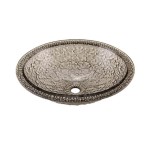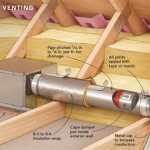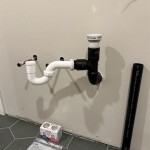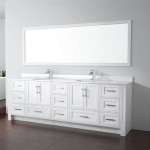Troubleshooting a Stuck Bathroom Sink Drain
A common household plumbing issue is the inability to open a bathroom sink drain. This predicament can arise from various factors, ranging from simple obstructions to more complex mechanical failures within the drain assembly. Understanding the potential causes and employing systematic troubleshooting steps can often resolve the problem without requiring professional plumbing assistance.
The primary function of a bathroom sink drain is to efficiently remove water and waste materials from the basin. The drain assembly typically comprises several components: the stopper (or plug), the drain flange (the visible ring around the drain opening), the drain pipe, the p-trap (a curved section of pipe designed to trap debris and prevent sewer gases from entering the home), and the tailpiece (the pipe connecting the drain flange to the p-trap). Any of these components can contribute to a drain that refuses to open.
Identifying the Type of Drain Stopper
The first step in addressing a stuck drain is to identify the type of stopper mechanism employed in the sink. Several common stopper designs exist, each requiring a different approach for removal and troubleshooting. These include the pop-up stopper, the lift-rod stopper, the twist-and-turn stopper, and the push-button stopper. Understanding the specific stopper type is crucial for effective problem-solving.
The pop-up stopper is arguably the most prevalent design. It is characterized by a small lever or knob located behind the faucet. Activating this lever raises or lowers the stopper, controlling the flow of water. The internal mechanism involves horizontal rods and a clevis that connects the lever to the stopper itself. Identifying this lever is a key indicator that the sink has a pop-up stopper.
Lift-rod stoppers, also known as plunger stoppers, operate with a vertical rod that extends through the faucet body or the sink deck. Pulling up on the rod lifts the stopper, while pushing down seals the drain. These are less common than pop-up stoppers but are still found in many older homes. The presence of a rod that directly controls the up-and-down movement of the stopper defines this type.
Twist-and-turn stoppers, sometimes referred to as rotary stoppers, function by rotating the stopper itself. Turning the stopper in one direction seals the drain, while turning it in the opposite direction opens it. These are often found in sinks where a minimalist aesthetic is preferred. The absence of an external lever or rod, coupled with the ability to rotate the stopper, signifies a twist-and-turn mechanism.
Push-button stoppers operate by pressing down on the stopper to seal the drain, and pressing again to release it. These stoppers often have a spring-loaded mechanism. These designs are becoming more popular due to their streamlined appearance and ease of use. The single push-point on the stopper surface is the identifying characteristic of this type.
Common Causes of a Stuck Drain Stopper
Once the stopper type is identified, the next step is to investigate the potential causes of the blockage. Several factors can contribute to a drain's inability to open. These commonly include hair accumulation, soap scum buildup, mineral deposits, and mechanical issues within the stopper mechanism itself.
Hair is a notorious culprit in drain blockages. Strands of hair tend to cling to the stopper, the drain flange, and any rough surfaces within the drain pipe. Over time, this hair accumulation becomes entangled with other debris, such as soap scum and grease, forming a dense, impenetrable mass that restricts water flow and prevents the stopper from moving freely.
Soap scum, a byproduct of the reaction between soap and hard water minerals, can accumulate on the interior surfaces of the drain assembly. This sticky residue can harden over time, binding the stopper in place and hindering its ability to open or close. Regular cleaning can help prevent significant soap scum buildup.
Mineral deposits, particularly in areas with hard water, can also contribute to drain issues. Calcium and magnesium, the primary minerals in hard water, can precipitate out of solution and form scale or limescale on the drain components. These deposits can create friction and impede the stopper's movement.
Mechanical issues within the stopper mechanism itself can also lead to a stuck drain. For pop-up stoppers, the connecting rods or the clevis might become loose, bent, or disconnected, preventing the lever from effectively lifting the stopper. Similarly, the spring mechanism in push-button stoppers can fail, rendering the stopper inoperable. For twist-and-turn stoppers, the internal linkage can become jammed.
Troubleshooting and Remediation Steps
Addressing a stuck drain requires a systematic approach. This typically involves attempting to manually release the stopper, cleaning the visible drain components, disassembling the drain assembly to remove obstructions, and lubricating moving parts. Safety precautions, such as wearing gloves and eye protection, should be observed throughout the process.
The first step is often to try manually manipulating the stopper. For pop-up stoppers, try moving the lever behind the faucet up and down repeatedly, applying gentle force. This might dislodge any minor obstructions. For lift-rod stoppers, try pulling and pushing on the rod with varying degrees of pressure. For twist-and-turn stoppers, ensure the stopper is properly aligned and attempt to rotate it firmly but cautiously. For push-button stoppers, try pressing the stopper firmly several times to see if the release mechanism will engage.
If manual manipulation fails, the next step is to attempt to remove the stopper for cleaning. For pop-up stoppers, reach behind the sink and locate the clevis. Carefully detach the horizontal rod connecting the clevis to the stopper. This should allow the stopper to be lifted out of the drain. For lift-rod stoppers, the rod typically needs to be unscrewed or detached from the stopper mechanism. For twist-and-turn stoppers, grip the stopper firmly and pull upwards while rotating it gently. For push-button stoppers, some models allow for removal by rotating the stopper and pulling upwards. Consult the manufacturer's instructions for specific removal procedures.
Once the stopper is removed, thoroughly clean it with warm water, soap, and a brush. Remove any hair, soap scum, or other debris that may be clinging to the stopper. Inspect the drain flange and the visible portion of the drain pipe for any obstructions. Use a small tool, such as a bent wire or a set of tweezers, to carefully remove any visible debris.
If the blockage persists, disassembling the drain assembly might be necessary. Place a bucket under the p-trap to catch any water or debris. Loosen the slip nuts connecting the tailpiece to the drain flange and the p-trap. Carefully remove the p-trap and inspect it for obstructions. Clean the p-trap thoroughly, removing any accumulated debris. Inspect the tailpiece for blockages as well. Reassemble the drain assembly, ensuring that all connections are tight but not overtightened.
After cleaning and reassembling the drain assembly, lubricate the moving parts of the stopper mechanism. Silicone-based lubricants are generally recommended, as they are water-resistant and long-lasting. Apply a small amount of lubricant to the connecting rods, the clevis, and any other moving parts. This can help to ensure smooth operation and prevent future sticking.
In situations where these steps prove ineffective, a plumbing snake can be employed to clear deeper blockages within the drain pipe. Insert the snake into the drain opening and carefully feed it down the pipe, rotating it as you go. This will help to break up and dislodge any obstructions. After using the snake, flush the drain with hot water to remove any remaining debris.
If a plumbing snake is insufficient, or if the problem appears to stem from a more complex mechanical failure within the drain assembly, seeking assistance from a qualified plumber is advisable. Attempting to force or repair damaged components can potentially lead to further damage and more costly repairs.
How To Get A Bathroom Sink Plug Removed When It Won T Un Quora
I Closed My Sink Drain Stopper And Now It Won T Open Again Is There Any Way That Can Repair This Without Hiring A Plumber Quora

How To Fix Drain Plug That Won T Open Empty A Basin Of Water

How To Fix A Bathtub Or Sink Pop Up Stopper

How To Replace Or Maintain A Sink Pop Up Drain Assembly

How To Unclog A Bathroom Sink Hana S Happy Home

How To Fix Pop Up Drain Waste Plug

How To Replace A Sink Stopper Quick And Simple Home Repair

How To Clear A Clogged Drain Reviews By Wirecutter

How To Fix A Bathroom Sink That Won T Drain Bfp Bay Area
Related Posts







